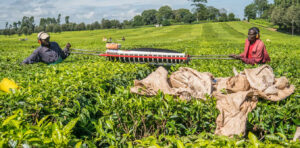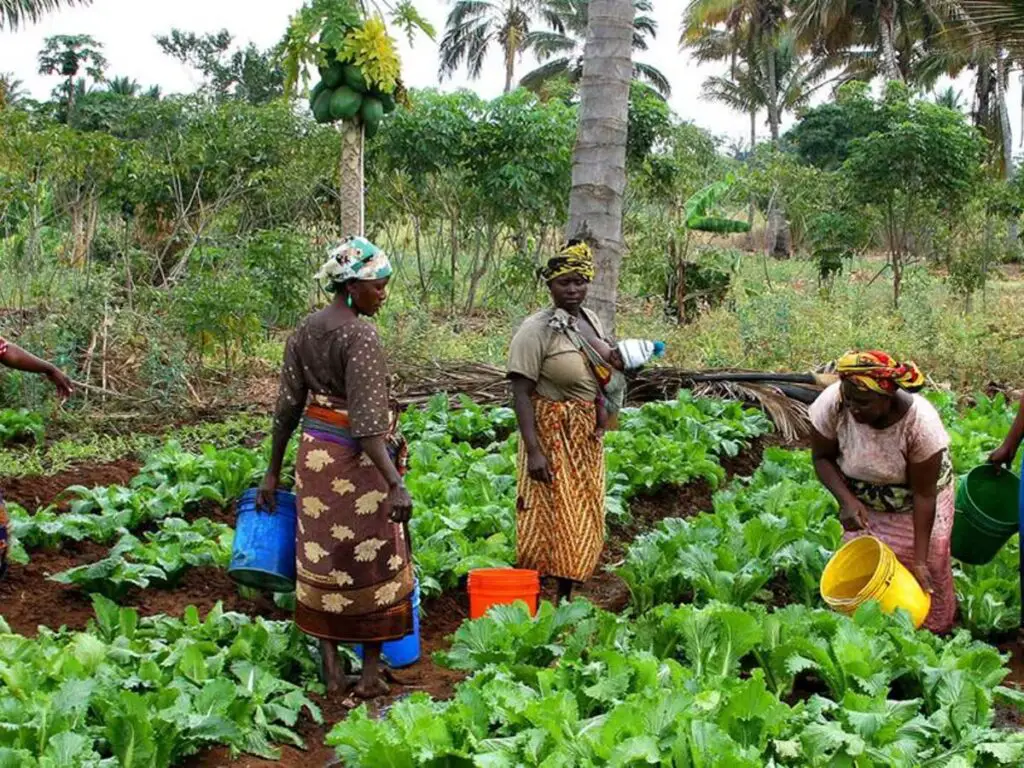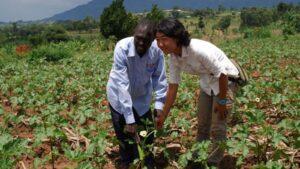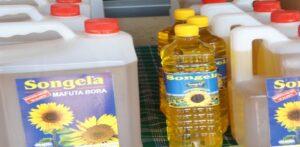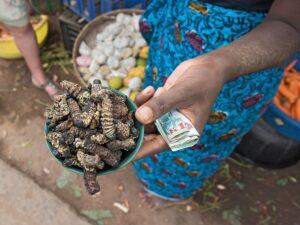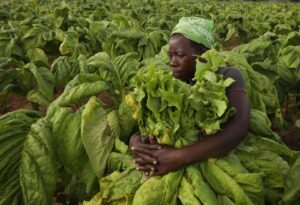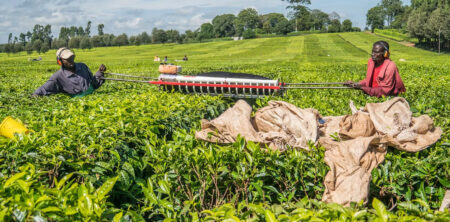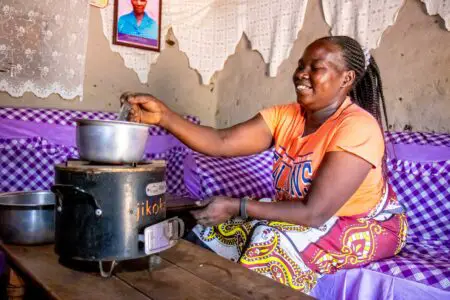- Agribusiness could drive Africa’s economic prosperity
- Dawood Al Shezawi: Why AIM Congress 2024 is the epicenter of global economic and cultural dialogues
- d.light’s 600,000 cookstoves project verified as top source of quality carbon credits
- Artificial intelligence (AI) could create a turning point for financial inclusion in Africa
- AIM Congress 2024: Catalysing global investments with awards
- Kenya’s economic resurgence in 2024
- The most stressful cities to live in 2024 exposed
- Tech ventures can now apply for the Africa Tech Summit London Investment Showcase
Agribusiness
- Expensive loans remain a significant issue across populations engaged in agriculture in Nigeria, Tanzania and Zambia.
- A report by the Alliance for Green Revolution in Africa (AGRA) says capital injection is a significant strategy agribusinesses use to survive.
- Moreover, agribusinesses face high operational costs from fuel prices and low-profit margins driven by currency devaluations.
The lack of agriculture-friendly financial systems saw agribusinesses turn down expensive loan options in the market, with only 15 per cent taking on commercial capital in 2023 and the rest sourcing capital from friends, family and their business savings.
The incentives by the government channelled towards agriculture failed to adequately cushion Agribusinesses from economic shocks, a new report by Alliance for Green Revolution in Africa (AGRA) has revealed.
The African Agribusiness Outlook survey is conducted annually to gain insights into the sector’s top priorities, how they address challenges, and what SMEs see as opportunities.
A reflection …
- Sustainable agriculture employs 65-70 percent of Africa’s labour force.
- Only two to three percent of African renewable water resources are usable compared to the 5 percent worldwide.
- In 2019 a report revealed that Africa produced more than 50 percent of the world’s cassava.
A severe drought has left millions of people in Africa dependent on grain from Ukraine, a country at war with Russia, yet a number of crops that could support more climate-resilient and healthful food systems in sub-Saharan Africa continue to receive limited attention.
Across Africa, cassava, sugarcane and maize stand out for supporting millions of families in governments’ quest to maintain food security
Sustainable agriculture is one of the highlights that support Africa’s economic development. For decades these cash crops in Africa have accounted for almost 20 percent of the entire continent’s revenue. It has further advanced and introduced concepts such as agritech, significantly teaching better farming …
- Limited internet access is inhibiting the uptake of agricultural innovations across Africa.
- While Agriculture remains the backbone of Africa’s economy, farmers in rural areas are yet to benefit from the innovative solutions designed to increase productivity within the sector.
- Innovative solutions are the key to boosting employment and increasing youth participation in the agricultural sector.
Limited internet access is inhibiting the uptake of agricultural innovations across Africa. This is according to Hon. Frank Tumwebaze, Uganda’s Minister for Agriculture, Animal Industry and Fisheries.
Speaking at the sidelines of the two-day Africa-Korea Agtech Innovation Summit held in Nairobi, Hon. Tumwebaze, said, “While Agriculture remains the backbone of Africa’s economy, farmers in rural areas are yet to benefit from the innovative solutions designed to increase productivity within the sector.”
The Uganda Minister emphasized the role of Governments’ investment in internet penetration across Africa’s rural areas. This will aid in adoption of …
The programme aims at empowering extension officers who would, in turn, train farmers through expert guidance. Chemba district targets to produce 100,000 tonnes of sunflower in the 2022 season to increase the production of edible oil in the country.
President Samia’s administration has plans to improve cotton farming, among other crops. The government has taken measures to improve sunflower production through an increased budget allocation for the Agricultural Seed Authority, up from Tsh.5.42 billion (US$2.3 million) in 2020-2021 to Tsh.10.8 billion (US$4.7 million) in 2021-2022.
In 2021, the government boosted the capacity of the Tanzania Agricultural Development Bank (TADB) by providing Tsh.208billon (US$90 million) to the bank to reach more farmers and finance them. It also empowered the National Food Reserve Agency (NFRA) to purchase 95,000 tonnes of maize from farmers.…
- World Bank reports that insect farming could provide over 14 per cent of the crude protein needed to rear all the pigs, fish, poultry and goats in Africa
- Dorte Verner, a Lead Economist at World Bank, says that it is possible to feed all people in the world with nutrient-rich insects and decrease the environmental impact of food and agriculture
- The population of Africa could hit 2.53 billion people by 2050, and the demand for food and protein would increase significantly, which the current linear food system might not satisfy
Most people see insects as ugly, dirty and irritating creatures that are only good at transferring germs. However, according to the World Bank, insects farming could answer Africa’s poverty, hunger and ecological crisis.
Despite their dirty nature, insects have a pack of great nutritional value, and the world could use them to tackle malnourishment in the continent, especially in children.…
Buhari said that the rice pyramids would aid efforts to reduce the price of rice in Nigeria. He expressed his expectations for other agricultural organizations to join the Central Bank of Nigeria (CBN)-funded Anchor Borrowers’ Programme (ABP) that supports Buhari’s drive for food sufficiency.
Speaking at the event Central Bank’s governor, Godwin Emefiele, said that CBN collaboration with RIFAN increased the national output of rice to over 9 million metric tonnes in 2021, up from about 5.4 metric tonnes in 2015.
Productivity per hectare of smallholder farmers has also increased from 2.4 metric tonnes to about five metric tonnes over the same period.…
Agriculture center launched in Kenya:
- Elgon Kenya and the University of Nairobi have signed a Memorandum of Understanding paving the way for constructing the Agricultural Technology and Innovation Centre (ATIC)
- The ATIC will nurture and strengthen innovations in agriculture and entrepreneurship, to foster the adoption of cutting edge innovations leading to job creation and product development
- Elgon Kenya Managing Director Dr Bimal Kantaria lauded the partnership, terming it the missing link between research and industry
The agriculture sector in Kenya has received a significant boost following a partnership between two leading institutions to set up a technology and innovation centre, the first of its kind in East Africa.
Elgon Kenya and the University of Nairobi have signed a Memorandum of Understanding paving the way for constructing the Agricultural Technology and Innovation Centre (ATIC) at the College of Agriculture and Veterinary Services, Upper Kabete Campus in the capital city.
The ATIC …
- A climate-smart crop insurance scheme introduced in Kenya combines satellite data and smartphone imagery to provide farmers with much-needed protection
- It relies on satellite images to determine if a particular area – sometimes covering up to 1,000 farmers
- Picture-based insurance requires farmer champions to periodically take photos on behalf of farmers’ crops at different growth stages
As climate change worsens, millions of smallholder farmers across sub-Saharan Africa grapple with unprecedented weather changes and influxes of pests and diseases that ravage their farms and devastate their livelihoods.
However, a climate-smart crop insurance scheme introduced in Kenya combines satellite data and smartphone imagery to provide farmers with much-needed protection.
To cushion farmers against climate change and boost productivity and resilience, governments and private sector players have been exploring various financing solutions.
Among them is index-based weather insurance, which relies on satellite images to determine if a particular area – sometimes covering up …
African Development Banks (AfDB) one of Africa’s vibrant development funders have levitated the cold storage chain industry in East Africa, by supporting it with a $10 million equity investment.
According to the bank’s statement, AfDB’s board of directors approved the sum which is part of the ARCH Cold Chain Solutions East Africa Fund (CCSEAF), which is targeted at supporting the development, construction and operation of greenfield cold storage, temperature-controlled solutions and distribution facilities in East Africa.
At the moment, several startups and business solutions have been established across East Africa, tackling storage challenges, one of them is Cold Solutions East Africa, which is one of the region’s leading temperature-controlled storage and logistics.
Read: Will the digital economy in Africa just remain a myth?
AfDB is not the only financial institution to throw its resources into the cold storage arena, Rabobank is also dedicated to the same market in East Africa.…
